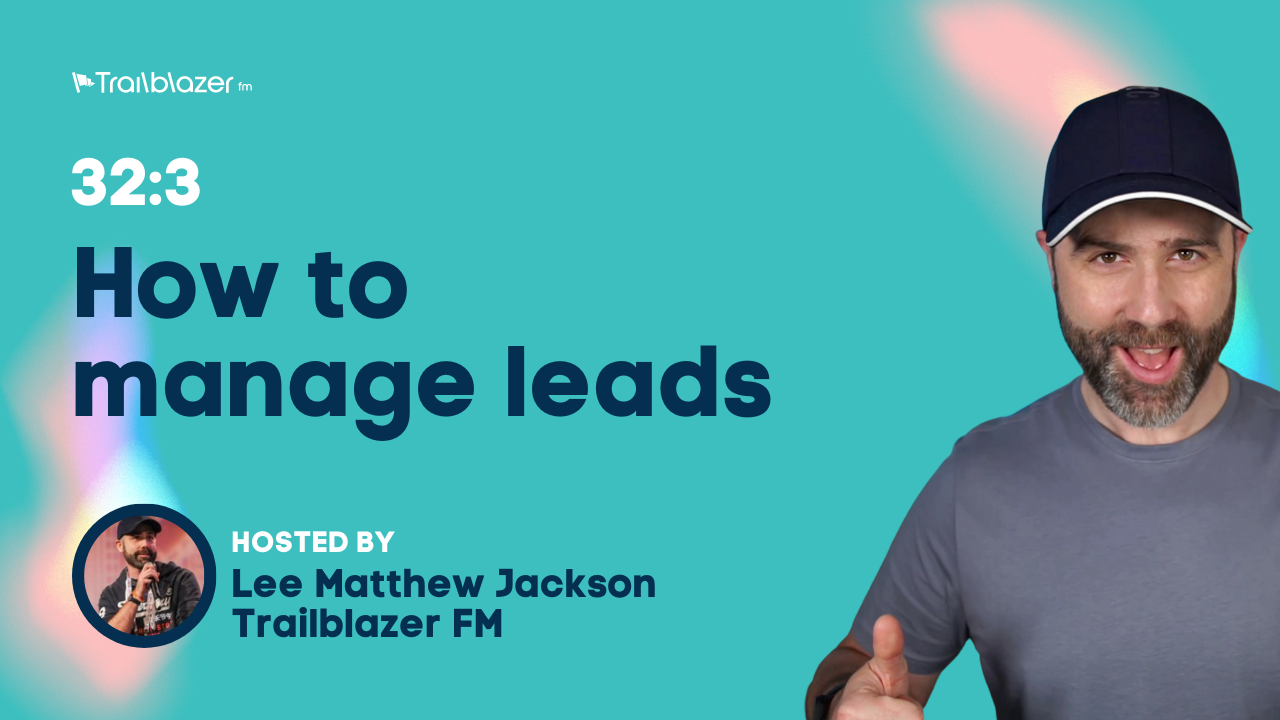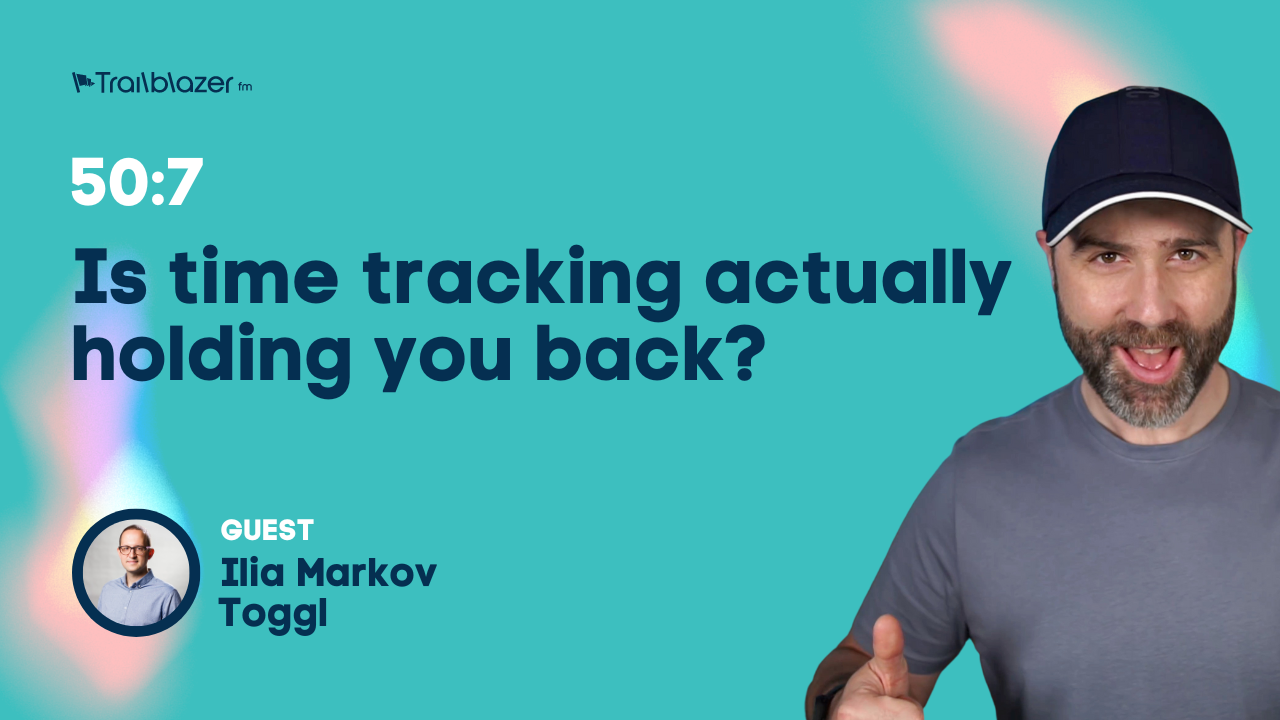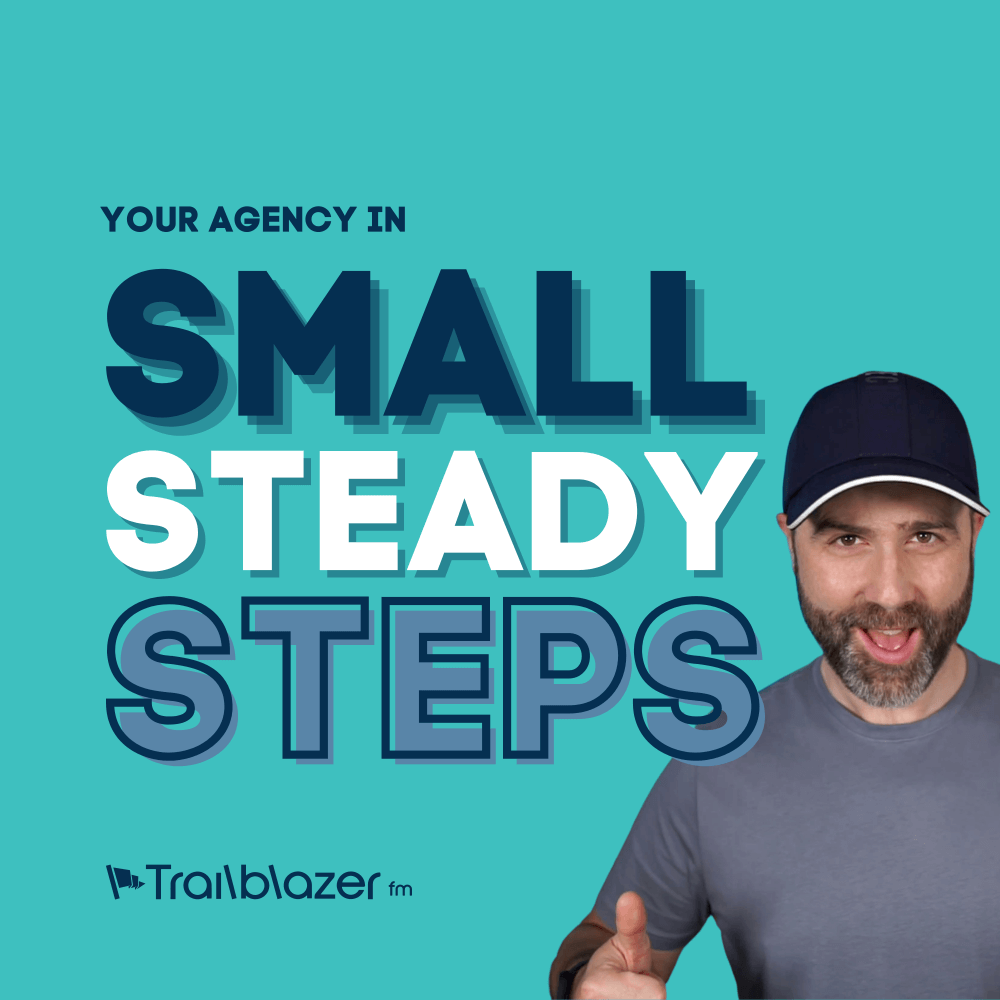
32:3 How to manage leads
So much business can be lost due to not handling leads effectively. With multiple channels of communication, and such unique needs, what can you implement to keep on top of, and to nurture the leads you get in?
So much business can be lost due to not handling leads effectively. With multiple channels of communication, and such unique needs, what can you implement to keep on top of, and to nurture the leads you get in?

In today’s podcast we unpack:
- What is a lead
- Documenting leads
- The stages of a lead
- Enquiry
- Needs analysis
- Estimate
- Negotiation
- Close
- The process of managing leads
- Record and attribute
- Set a follow up action
- Review / repeat regularly
- Software options
- CRM System
- Pipedrive
- Salesflare
- Zoho CRM
- Salesforce
- Calendar / task reminders
- Spreadsheet
By the end of this episode you should be able to visualise how to effectively manage the leads in your agency to ensure you don’t miss things. I’d encourage you to adopt a process, and utilise a task or CRM system to keep communications flowing.
Transcript
Lee Matthew Jackson: Welcome to The Agency Trailblazer podcast. This is your host Lee and today I’m going to be teaching you how to effectively manage your leads even when you are super crazy busy. Now let’s talk about being super crazy busy. It’s fantastic to be a busy agency. It’s great to have all of those projects and what happens in most companies, including my own, is we get busy. We focus on all of that work, and actually managing leads and thinking about the future becomes something that’s more of an inconvenience. It’s something that just sits to the side and we do what we can, but actually we just need to get the paid work done. In fact, I remember maybe 10 years ago, we would very often say that paid work is far more important than responding to inquiries for other services. So we would actually put paid work above all things because that was money that was going to come into our business.
Now the problem with that is it would lead to this real regular feast or famine. We would either have loads of work coming in and lots of billing etc and then when we came to the end of those projects, we would have pretty much nothing. It would be crickets. They would actually be no leads. We hadn’t nurtured any leads during the feast, which meant we’re now in famine and we’re crazily hunting, trying to find some work and we would make real bad decisions. We would quote too low just to attract somebody to our business or we would get involved in a project that wasn’t really our expertise, but they had money and we needed money in because we had staff to pay, etc. So we were wrong. I was wrong. Putting our paid work above leads was actually really, really irresponsible. There should have been a balance, neither is any more important, but that should have been a balance and that is something that we learn very, very early on when we were putting that paid work above all of those leads and all of those inquiries from potential new businesses.
So before we understand how to get that balance and how to more effectively manage those leads, we probably need to understand what those leads are. Now a lead is essentially an opportunity. It is an opportunity to sell and perhaps it could also be an opportunity to collaborate etc. Now the way I like to describe it to people would be if I meet Larissa and I am the seller of pens, I like to sell pens for a living and I notice that she has a run out of ink in her pen. So I now have this opportunity here. I’ve already built up some trust with Larissa. I have an opportunity here to be able to sell her a blue pen. In fact, I’ve got an opportunity to sell her a range of pens because I also see she has a problem where she might be out and about and she runs out of ink at times. So perhaps I’ll actually want to sell her a few so she never has this problem again. Now this opportunity could be one that I’ve created, so it’s one that I’ve noticed and I can then pursue this. Or alternatively, Larissa may have actually come to me and said, Hey, I hear you sell pens, could you tell me more please? So this is a lead slash opportunity, whatever you want to call it, but we now have an opportunity to sell, to do business.
So you’ll notice leads are not necessarily something that just come in. Leads are also something that you can create. In that story I showed you that I noticed an opportunity. Alternatively Larissa could have approached me with the opportunity, but in both circumstances there is a potential opportunity for business and that is something that I would record as a lead. That is something then that I would start to pursue to see if there is anything in that. Now what we do internally is we make sure that we document all of our leads. So if I’d have noticed that Larissa ran out of ink and I notice that this is a common occurrence for her, this is something that I am going to document and then I can take this lead through several stages. This lead or this opportunity and there are several stages of that lead.
Now the first one is going to be the inquiry stage. So perhaps I’m inquiring of Larissa, Hey, can I help you with your pen situation? Or alternatively, Larissa is approaching me to say, Hey, I keep running out of ink for these pens. I hear you sell pens. So we have our initial inquiry and from that we want to move that into the needs analysis stage. So we want to have now a deeper conversation with Larissa to find out what her needs are. Is this a common problem? Is she regularly running out of ink? What colours does she like? Where does she use the pens, for example, does she need our special space pen for when she’s travelling around in space or whatever is going on. This is so cool. Larissa is actually sat right opposite me listening into this as well. So I think she’d like, you’d like to travel to space? Yes. Excellent. So there we go. So I can upsell the space range of pens, et cetera. So we’ve got our whole needs analysis going on.
So once I understand from Larissa of what her needs are etc, I can now present to her some sort of estimate. Okay, you’ll probably going to need Larissa, five blue pens that’s going to last you all year and you’re going to want one space pen for the travel to space that you have planned mid year. So that’s the estimate that I’m going to provide to you, that’s going to cost you $1 million for all of that. The blue pens are cheap, but the space pens obviously very expensive just to see what NASA did all she could just take a pencil, which is what Russia did. If you’re a geek, you’ll get that. Anyway, we’ve provided that estimate and then we have essentially the negotiations slash review phase, so this is where Larissa will therefore review the estimate or the proposal, whatever has been sent. She might be asking questions, who might be clarifying a few things. There may need to be movement on price. Perhaps she doesn’t have the budget for a space pen. Hence, I then show her the half price pencil option that we have instead, etc etc until eventually we have a final agreement and we can then close that lead and the close could be a close win or it could be a close lost. Close win would be Larissa says yes, now that you’ve changed it for a space pencil, which is a lot cheaper, I can afford all this, this is great. I would like to go ahead please. Thats a warmed up opportunity, that’s a lead that’s been converted. Or alternatively she may say, you know what? It doesn’t matter, I’m going to go down to Wilkinson’s and just buy a pack of pens. I’m all good mate. Don’t worry about it ad that would be a closed lost opportunity.
So the important thing here is that a lead has been established and then we followed that lead all the way through to its natural conclusion. That could have either been won or it could have been lost, but we have followed that through. Now being able to do that is essential for your ongoing sales pipeline. Perhaps Larissa would not have needed these pens for a few weeks yet. So I can go ahead and get the order in for those pens etc, whilst I’m working on other projects and then deliver those in the near future. But that’s my sales pipeline. I can now see that I have these orders coming in, I’m building upon these projects etc, because I am having these conversations because I am nurturing these leads, these opportunities, and then I am converting what I can. You’re not going to convert all your leads, but if you are not following any of your leads up, you are going to hit that horrible famine session where you’ve come to the end of all of your projects, you’ve delivered everything and you’re trying to work out where the hell do we go next? Who can we sell to next? And that’s where the desperate times come in and the desperate measures come in. And that’s something that I don’t think any of us enjoy as a business and it’s something that we should be avoiding.
So let’s talk about that. Let’s talk about the process of managing those leads. Now there’s a few common issues. Number one, you’re busy. Number two, we’re probably forgetful and we don’t have the time, so what we need to do is to document those leads and we need to put them into a system or create a system of managing those leads. Now, we established earlier the stages of a lead or an opportunity, and for each one of those stages there are a few simple actions that you can do to keep moving through that cycle. So we take a look and we get our initial enquiry. We should record that enquiry and then attribute to it the stage we’re at, which is usually at the enquiry, unless an awful lot of information comes in, and then that could mean that we’re at the needs analysis stage already because they’ve provided a very detailed brief. But essentially your inquiry is coming in and we are then going to attribute that and we are going to give ourselves a follow up task. That is the most important part of any lead management process is always making sure there is a follow up action that is assigned to somebody. If there is no follow up action at the end of any one of these stages, then that lead is probably going to fizzle out and you’re going to lose it. So enquiry, we get our enquiry in. We need a follow up task to get more information. If we are at the estimate stage and we’ve sent our estimate, we need a follow up task to remind us to follow up with that client to discuss the estimate that they have received and to negotiate etc. Even when we’re at the negotiation phase, for example, we’ve got several projects that are at the negotiation phase. People are reviewing the contracts, they’re asking questions, et cetera. We have got follow up tasks, two reminders to keep that ball rolling, to keep that conversation open, to keep that lead, that opportunity warm so that we can hopefully convert that in to a sale. So our lead comes in, we record it, we attribute it to a stage, we set our follow up action. We then review that follow up action, make sure that we do it, and we progress that lead through each and every stage. Remember, if you have a team, then you will be able to assign some of these stages or some of these tasks to your team members. Perhaps your team members are the ones that will need to do some of that needs analysis, or perhaps your team members are the ones who will need to do the quotes etc. So as long as that follow up task is assigned and is owned by someone within the business, and it is an open task against that lead, that opportunity, then you are ensuring that that lead does not get forgotten.
Now, if you understand the basic system of moving somebody through those different stages of the lead and making sure that there is always some sort of follow up action for each and every stage to help you progress through the whole thing, then you can essentially use anything you want, whatever works for you as a business to be able to document and manage that. Now, some people will do that in a spreadsheet, so they’ll have all of the leads, the opportunities, and they’ll put people in columns so that you can see what stages they’re at etc, and then everyone will share access to that. Alternatively, some people use that calendar system to set themselves tasks or calendar reminders to follow up on particular elements. Now with a spreadsheet option that requires people to collaborate on the spreadsheet and requires people to check it regularly. At least with the calendar option, where you’re assigning calendar appointments etc, then that is actually going to physically remind you. So that’s more passive, it’s going to remind you when you need to do something about it. So that’s a good system. Our personal preferred system, however, is to actually look at a CRM system. So this is a customer relationship management platform that will allow you to feed in all of your contacts, the companies that you’re dealing with etc, and then also log all of those opportunities that you have to do business with other people and then you can take people through those individual stages. Again, it’s going to act like a task/calendar system because it will have the capacity to remind you when you need to do stuff to progress leads through to the next stage. But also it acts as a kind of a passive thing as well cause you can always jump on at any time and see a snapshot of the business and see a snapshot of your potential sales pipeline.
Now both the amazing and the terrible thing about the internet is that there is so much choice out there. There are tonnes and tonnes of CRM tools that you can utilise. So what I’m going to do is I’m going to pop a few links to CRM platforms that we have had experience with as an agency that we’ve used successfully or that we’ve seen other clients using who have had great experiences with them. Now before you decide on any CRM system, the first step you need to take is write down what you believe the most efficient process for you to internally manage your leads will be. Does it look like how I have described an enquiry comes in, you will attribute a stage to that enquiry. It might be acquired, it might be it needs analysis. You will assign a task to somebody within your company to follow and progress that lead to the next stage and you will then rinse and repeat until you close that lead. Once you’ve documented that process, then you can take a look at some of the platforms out there and there are, like I said, many, many CRM systems. What you’ll probably need is just something that can be easily molded and allow you to manage your leads in a way that you will find the most effective. So for example, something like pipedrive is a nice clean user interface. You can drag and drop your opportunities through those stages and you can assign tasks to people within your organisation. Alternatively, you may choose to use your existing project management system and have a project that’s just set aside for your lead management where again, you can assign tasks to people within your company as follow up tasks and make sure that you progress your leads, your opportunities through those stages.
Now you could go as far as say, looking at something larger and more complicated like Salesforce, which is usually used by some of the bigger companies out there, which also allows you to integrate other elements of your business, maybe your service department, your finance department, et cetera. There is certainly a place for that. But if you have not had a system as it were for managing your leads before, and this is all new to you, then I would recommend you first start simple, build up your processes, get used to keeping these leads warm and converting those leads be they won or lost, and then look to evolve the platforms that you’re using over time and maybe start to embrace some of those bigger applications that allow you to manage other aspects of your business as well. So get really good at this and then look to expand.
So we’re coming into land. Let’s do the Lee Matthew Jackson patented recap. We talked about lead management today and we’ve established that so often we’ll get super busy and we will neglect leads, which leads to feast or famine. So what we decided to do is that we need to, in our businesses have some sort of process which is simple and easy to follow, to allow us to manage those leads even when we’re busy on projects so that we will have a consistent healthy lead and sales pipeline. What we did was we talked about the stages of a lead, which includes enquiry, your needs analysis, your estimate, your negotiation and then the close. Then what we did was we talked about documenting what’s going on with those leads by ensuring that for each one of those stages we are recording what’s going on and then we are setting a follow up action for somebody within our business to do something with that so that that lead will always have a live follow up action so that it no longer gets neglected.
Then finally we talked about some of the software that you could use, perhaps starting simple before you then go for something more complicated. Many people will be attracted to big, attractive, complex sounding CRM systems that will apparently change your life. But if you can get the process nailed first with something simpler, maybe Airtable, maybe pipedrive, maybe salesflare etc, and then you can look to move into bigger aspects of your business through some of these bigger platforms.
Folks, what have been your experiences of lead management? Are you in the camp where things get neglected or have you got your own systems and processes that you’d be willing to share? If so, come along the Agency Trailblazer website. Take a look at the show notes for this episode and feel free to comment back and share with us more tips and tricks for managing leads. If you have any problems, let me know as well in the comments or come and join our Facebook group over on trailblazer.fm forward slash group where we can continue the conversation in their.
Before we close, can I recommend the sponsor of today’s episode, which is Cloudways they have powered our websites now for some time and the support we have had, the performance that we have had has been second to none. I run, as you’re maybe aware two agencies and Cloudways has been the backbone of both of those agencies, including a large global website as a service platform that we run it through it. So I would recommend check out the show notes for a link to go and check how Cloudways and what they could be doing for your agency. Folks, don’t forget, come and hang out with us in the Facebook group and if we don’t see you in there, we will see you in next week’s episode.








